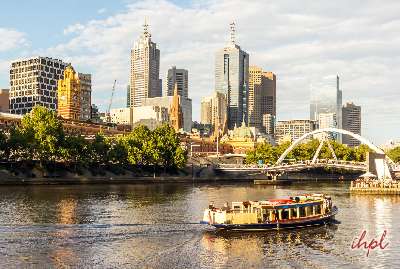In Australia's largest national park, you can enjoy ancient landscapes with waterfalls, lush rainforests, meandering marshes, unique fauna, and prehistoric rock art. Kakadu National Park, which spans approx. 20,000 square kilometers, is listed as a World Heritage Site and is famous for its cultural and environmental values.
From the Kakadu the escarpment wall summit point, admire spectacular vistas. Then, travel along the dazzling Yellow Water Billabong to see crocodiles, other wildlife, and the millions of migratory birds that partially reside in the park's wetlands. Kakadu also has the oldest indigenous rock art in the world surrounded by lush jungles, steep canyons, and tranquil swimming springs.
Overview of Kakadu National Park
| Location | Australia |
| Address | Kakadu Hwy, Jabiru NT 0886, Australia |
| Timings | Sunset to sunrise |
| Area | 19,816 km² |
| Established | 5 April 1979 |
| Google Map | – |
Highlights
- At one of the most impressive Aboriginal rock art sites in Australia, which demonstrates long-standing ties between the people and their land, stroll past the sizable rock shelter and lookouts.
- See x-ray paintings showing the area's abundant bush foods, such as fish, waterfowl, mussels, wallabies, goannas, echidnas, and yams in Ubirr's main gallery.
- Observe the sunrise or sunset on an award-winning Yellow Water Billabong cruise (available all year) at Cooinda, which lies 55 km from the township of Jabiru.
- Motor Car Creek is surrounded by dense monsoon forest and is a dark retreat with a single gushing waterfall.
- The two main waterfalls in Kakadu sustains its breathtaking view, whether flowing at total capacity or reduced to a trickle during the dry months. Visit Jim Jim Falls by engaging in a demanding four-wheel-drive excursion.
Kakadu National Park Ticket Price
Park pass prices differ depending on the season, with lower prices during the tropical summer from November to May. The national park's passes are free for Northern Territory residents.
Note- The Kakadu National Park's passes are valid for 7 days only.
| Category | Dry Season (15 May – 31 October) | Tropical Summer (1 November – 14 May) |
| Adult (16 years and over) | $40.00 | $25.00 |
| Child (aged 5-15 years) | $20.00 | $12.50 |
| Family (2 adults and 2 or more children) | $100.00 | $65.00 |
| Concession* | $30.00 | $19.00 |
Recommended For
Kakadu National Park is full of excitement and adventure. This is a huge attraction for families, couples, groups, and solo travelers.
About Kakadu National Park
Located 171 kilometers (106 miles) southeast of Darwin in Australia's Northern Territory is the protected region known as Kakadu National Park. A World Heritage Site, it is. The same area as the national park is also designated as Kakadu as a locality, and 313 people were counted as residing there in the 2016 Australian census.
Around 140 million years ago, most of Kakadu was buried in a shallow sea. Arnhem Land was created from a flat plateau above the sea, and the escarpment wall was made of sea cliffs.
The escarpment rises 330 meters (1,080 feet) above the plateau and stretches 500 kilometers (310 miles) along the park's eastern border and into Arnhem Land. The escarpment has nearly vertical cliffs in the vicinity of Jim Jim Falls, while farther north, it has isolated outliers and stepped cliffs.
The Arnhem Land plateau and escarpment complex, also known as the "stone country," the outliers, the lowlands, the southern hills and basins, the floodplains, and the tidal flats, are the six principal landforms in Kakadu National Park.
There are various habitat types for each landform. Kakadu's varied landscapes and the habitats they contain are features that contributed to its listing as a World Heritage Area.
The various settings of Kakadu National Park support a great assortment of creatures, several of which have adapted to specialized habitats. Some animals in the park are rare, endangered, vulnerable, or endemic.
In addition, numerous creatures only become active at specific times of the day or night or during particular seasons of the year due to the harsh weather conditions in the park.
Interesting Facts about Kakadu National Park
- The Aboriginal Land Rights Act of 1976 protects around 50% of Kakadu National Park as Aboriginal land. The majority of the remaining area is subject to land claims.
- Kakadu National Park is considered as a Commonwealth Reserve. The park is managed in collaboration with the original Aboriginal landowners by the Commonwealth Department of Environment and Heritage.
- It is thought that the word Kakadu comes from the Aboriginal language Gagudji, which the Europeans translated.
- Floodplains, billabongs, rainforests, plateaus, escarpments, and woods make up the terrain in Kakadu National Park.
- Kakadu National Park is home to several animal species that are unique to this area.
- Kakadu National Park is one of the least weedy parks in the world since there are very few weed species there, and fewer than 6% of the park's plant species are weeds.
- Black wallaroos, antilopine kangaroos, short-eared rock wallabies, saltwater crocodiles, dingoes, brown bandicoots, and black koalas are among the fauna that can be sighted in Kakadu National Park.










